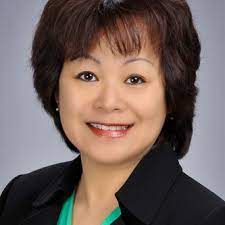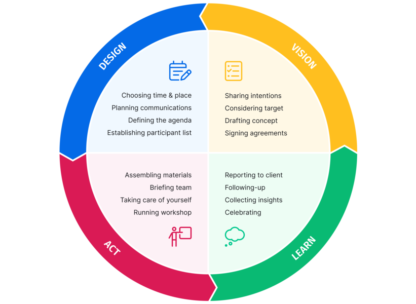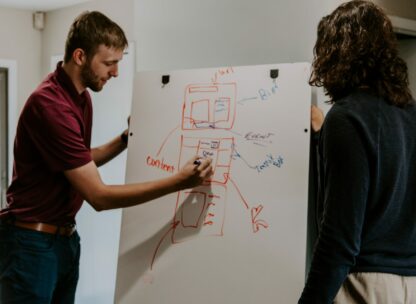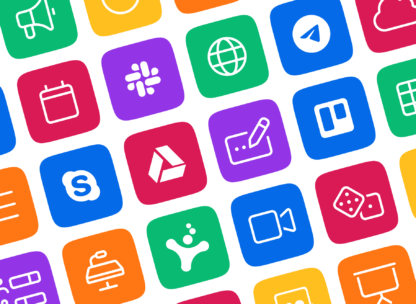Courageous conversations & visual facilitation: an interview with Rosanna von Sacken

Helping a group have deeper, more meaningful conversations is a cornerstone of great facilitation. Whether working with a team to solve problems or build relationships, creating a safe space for discussion and engagement is the foundation of progress.
But how might we create those spaces and conversations in practice? What might we learn from the field of visual facilitation and how could we apply it when we facilitate meetings and workshops?
To celebrate the launch of The Power of Facilitation – a new book about how groups can use facilitation to create great results – we’re speaking to the contributors to the book about their approaches and ideas.
In this first interview, we spoke to Rosanna Von Sacken of Advanced Consulting and Facilitation Ltd. about her approach as a visual facilitator and coach, and learned so much about her practice and how her experiences in emergency management led her to facilitation.
Rosanna shares her insight on how to have more courageous conversations, ask better questions, and create encouragement and trust in a group. We also discuss the differences between graphic and visual facilitation and how both processes might help create better workshops and meetings.
We found Rosanna’s insight and approach illuminating, and we hope you might use some of the ideas and discussion points in your own practice!
Let’s take a look!
Hey Rosanna, how do you encourage participants to have more courageous conversations?
Courageous conversations are about speaking our truths and experiences, our perspectives, how we really feel, and what we really want to talk about in respectful ways, even if we are out of our comfort zone.
One has to have a learning mindset to have courageous conversations. Disagreements in courageous conversations are absolutely welcome as they generate new ideas, challenge our thinking and mindsets.
Trust and safety are paramount factors for courageous conversations to take place. Without them, people may participate in conversations but in limiting ways, such as talking about issues on the surface without going deeper, saying things that please others and not truly reflecting how one may feel, not taking ownership or responsibilities when problems occur, or worse still, shutting down or not participating at all.
Fulsome, meaningful and courageous conversations take time. They take time for people to know they can speak their truths, be listened to and be heard without fear of shame, guilt or embarrassment. For real courageous conversations to happen, time must be allowed to build trust and safety, to actively listen, to be inclusive and open, and invite those that may need more time to reflect, to think things over, or to verbalize their thoughts.
Encouragement is not the same as requirement or compliance. Designing encouragement is creating and hosting space for participants to dip their toes into various territories.
What’s the secret to being a great visual facilitator?
I am a facilitator first before I am a graphic or visual anything. I call myself a “visual facilitator” not a “graphic facilitator”. I use my drawings to help me with my work, from scoping with clients, designing a session, developing and preparing materials for a session such as worksheets or handouts or flip charts, and using the same or similar in real-time and sometimes post-event.
I’d like to point out my interpretation of being a “graphic facilitator”, a term that is widely used but which doesn’t always mean the graphic facilitator is actively involved in the design and facilitation of a session.
This term is often used to mean a “graphic recorder”, someone whose responsibility is drawing, on a large chart or digitally, what they hear / sense in the “room”, with little or no active engagement with participants in a session. Although one can argue that the graphic artifact does facilitate participants’ understanding and memory.
If I were hired to facilitate, my primary focus is on the scoping, design and development, preparation, facilitation, and post-event responsibilities. I may use visual tools (not just drawings) in my work and during my real-time facilitation, thus “visual facilitator” not “graphic facilitator”. “Graphic” to me, implies using only drawings.
Visual tools can include a wide range of tools in addition to drawings: physical tools like card decks, die, games, videos, etc. I try to also include movement, music, and other sensory tools depending on a session.
If I knew in advance that a graphic recorder will be part of a session, I’d like to consult with the graphic recorder, if they are amenable to it, about my design and process, in order to co-determine how best to use their drawing as a real-time tool.
One piece of advice I can offer is to be gentle with yourself, it takes time to hone any new skills. Practice your listening skills a lot, and find a trusted buddy who would give you honest feedback, bounce ideas off, and provide a supportive shoulder or ear.
How have you approached creating engagement in virtual or hybrid workshops?
Virtual and hybrid workshops are different, so the design will need to be different for both. I will touch on designing and facilitating encouragement in general here.
Encouragement is not the same as requirement or compliance. Designing encouragement is creating and hosting space for participants to dip their toes into various territories so to speak, including the unfamiliar or uncomfortable ones. This ties in with the question above, without trust and safety, people tend not to truly and deeply participate despite whether inviting spaces are created or hosted.
Here are some of my go-to ways to facilitate encouragement:
- Explicitly saying to people that passing is ok, it is one way to honour the trust and safety built into the environment.
- Asking a participant if it’s ok to circle back to them if they chose to pass.
- Asking appropriate prompting questions. This is very much a judgment call in the moment.
- Allowing time for people to think, to jot down their ideas and thoughts down first before verbalizing or sharing in a big group.
- Paraphrasing and summarizing to make sure I and the group understand. These are also good ways to help folks that may have difficulty articulating their thoughts (with their permission).
- Using drawings to show or summarize what I hear or sense in the room.
- Doing small group work gives people the time and room to share, which is usually more inviting for the quieter, shy or reflective folks.
- Doing round robins so everyone has a chance to contribute.
- Designing multiple and sensory ways to involve people, providing options and different ways to get people to feel heard and be seen.

What methods or approach would you use to repair broken relationships between team members?
I would take a coaching approach to first work with the individuals before working with the team, if that is possible. It’s important to find out the root cause and issue underneath the relationship from each perspective. This would give me a sense of whether something is a common or recurring issue or if it was an isolated event or if it was a team relationship concern or something else.
Repairing relationships is not a simple task, and won’t be repaired unless (guess what?) trust, safety and desire exist for all the parties involved. Relationships take time to build and foster, but they take virtually no time to break down. Minor breakdowns, if repeated, can accumulate in negative feelings, which may or may not be shared amongst all parties involved, culminating in possible growing resentment, gossips, pushbacks, frustrations, etc.
If the involved parties truly wish to repair the relationship, there are a few difficult things that will have to happen first, honesty and self-reflection will be needed in this process. As a minimum, encourage conversations around:
- Awareness – asking oneself about “What part / role do I recognize that I had in this broken relationship? and “How much ownership am I willing to take?”
- Desire – asking oneself about “How important is this relationship to me?” and “Do I want to keep and maintain a good, or at least manageable, relationship with this person / group?” and “What are the consequences if I do or don’t keep and maintain this relationship? And can I live with that?”. Without the desire to make changes, repair won’t happen.
Connection to people should always come first before connection to content or tasks
What do you think the role of fun is for a facilitator?
Everyone likes to have fun. Who doesn’t like to laugh or play? We can learn from play. It is unfortunate that some adults and some work environments have lost that way of learning – learning through play and doing, learning through trying and experimenting, learning from mistakes, learning through lightness and delight.
As a facilitator, I try to inject as much fun into an activity as possible. Fun can come in many different forms – humor, music, movement, games, involvement in different types of interaction among people and nature.
Since Covid, I have been increasingly using applied improv techniques. Depending on the group, I may use different language and call something an activity rather than a “game” or “improv”, as these terms tend to scare people off (like drawing or creativity). Fun activities tend to increase engagement, and connection when people are actually enjoying themselves – that is being human-centric, encouraging people to be themselves, to allow their emotions and heart matters to show. Connection to people should always come first before connection to content or tasks.
What led you to engage in Emergency Management Consulting and what have learned as a facilitator?
Actually, it was the other way around – it was emergency management work that led me to facilitation. In the emergency management field, one cannot do the work entirely alone, it always involves working with multiple agencies, teams, departments, partners, sponsors and/or stakeholders. Collaboration, coordination and communication are key in emergency management work. Like many other fields and professions, facilitation skills naturally blend in.
I didn’t know facilitation was a field or profession then, I just did it. Until one day, a client shared her appreciation of my approach and the impacts from my work, she said I was a great facilitator and asked if I was certified. That was how and when I decided to investigate and learn more about facilitation and eventually morphed my career from solely being a consultant (although I still do consulting work) to more being a facilitator, and becoming a Certified Professional Facilitator.
Many professions use facilitation skills but do not always recognize the power of effective facilitation, the application of facilitation skills in their work, or even the name of it: facilitation. More still needs to be done around educating and sharing with the world about the power of facilitation. The encompassing umbrella of facilitation cover skills beyond effective communication, leadership, collaboration, strategizing, group dynamics management, problem-solving, team development …. and so much more.
A great facilitator always asks questions. Good questions are easy to learn, great and powerful questions are a lot harder, especially when thinking on one’s feet.
How do you help people learn to ask the right questions? How can we overcome the fear of speaking up?
One of the first things to acknowledge is that no one knows everything about everything. We all have our own partial views of the world, mostly based on our past, experiences, education, knowledge AND our humility in recognizing we don’t know it all.
A great facilitator always asks questions. Good questions are easy to learn, great and powerful questions are a lot harder, especially when thinking on one’s feet. The questions we ask can influence how, what, why, and whether the other party will share.
In my “Dare to Ask – Powerful Questions” course, I cover different aspects of asking questions – the basics of different types of questions. Distinguishing the good from the great and powerful questions, types of questions that serve different purposes, and of course, different ways and means of delivering a question. On paper, it can look simple and easy to do until one puts that skill into practice.
In my programs, I design opportunities for participants to apply and practice. Sometimes I may even do impromptu demonstration and role-play using a participant’s scenario from their past, and we practice different ways of asking questions, highlighting the words or framing of our understanding, the tone, the depth, the timing, and the mindset at play. It is often a very enlightening experience, both for me and for the participants, because I don’t know how I would respond, or what might be showing up in the role play.
To me, there is a difference between asking questions and overcoming our fear of speaking up. The latter is highly influenced by our past, our experiences, and our self-confidence, all of which determine our self-perception of worthiness, how we see ourselves, and how we think others may see us.
Judgment and comparisons thus can become the biggest barriers to feeling comfortable to speak up. One can speak up by showing off, arguing, or putting down someone else’s ideas. Asking questions is a respectful way of speaking up, the primary reason is to gain a better understanding and to learn.
What do you think are the main obstacles to resolving conflict and how can facilitation help overcome them?
Conflict resolution can be a misnomer – a facilitator may not always be able to resolve a conflict in the room or for a client, nor would it always be possible or relevant for a facilitator to do so.
However, a skilled facilitator will be able to create and hold the space for courageous conversations, create a safe enough and trusting enough environment to at least start an open and respectful conversation, teasing out the multiple layers of issues that cause the misunderstanding, distrust, emotions, etc. Sometimes, all a facilitator can do is to address a conflict by deferring to someone else and outside the “room” with an explanation of why.
One of the main obstacles to resolving conflicts is time. People sometimes expect a facilitator (or anyone for that matter) to resolve a deep-seated conflict in a few hours – that is often not realistic or achievable. That’s why it is critical in the scoping stage and along the project path for a facilitator to discuss with a client, to be very clear about what the outcome(s) might be for a workshop/session, so that expectations can be met mutually by both the client and facilitator and to avoid disappointment or a sense of failure.
Do you have a favourite method or technique for enabling positive dialogue?
Getting to know someone or a group is an important first step in all positive dialogue. It’s not what, you, the facilitator can do or say that matters right away (they matter later), it’s how the other(s) feel about or perceive you. Can they trust you? Do they feel that you are able to do, listen, empathize, support, or achieve their objectives?
Two of my favorite methods are Appreciative Inquiry and the Art of Hosting. They are tried and true methods that can be used on their own, modified or combined to suit a situation. They help to set a positive tone, honor and appreciate the contribution and wisdom in the room, invite people to host others and themselves, dream together about what the future/outcomes might be.
How do you prepare for complicated, projects like your “ landslide risk assessment project in British Columbia, Canada”?
That was a big project, involving multi-stakeholders and multiple levels of sponsors (the agency that paid for the project, the engineering firm that did the research, analysis and recommendations, and leading this workshop, and of course all the invited players).
Having a geology degree helped, and studying a landslide in BC as my thesis topic also helped. That gave me credibility on the scientific front. Having emergency management experiences for 25+ years also helped, that gave me credibility for the stakeholders in that field.
Having worked with First Nations in various projects before helped to give me confidence working with the indigenous communities. Having worked at the federal and local government levels gave me a good understanding and viewpoint of the potential politics that may be involved.
I was hired as a facilitator, not a geologist, nor an emergency management consultant for that project. So my focus was on facilitation-related items.
It took a lot of work, on my part, including project management, interpersonal skills, communication skills, and facilitation skills of course. I had to negotiate what was feasible and what was not feasible given the time allowances, access to stakeholders, realistic and achievable outcomes, and budget.
Elements of the process included, but not limited to:
- Phone or email interviews with some representatives of the stakeholder groups
- Compilation of the interview results
- Process design and re-design of the workshop, including visual tools to use
- Development and preparation of the workshop materials
- Coordination with and time management for the speakers and with the sponsors for the workshop
- Acknowledgement of the First Nations’ participation
- Face-face facilitation at the workshop
- Writing of a summary report
The mistaken notion that senior leaders are infallible, know it all, can’t fail, are strong and capable of all things, etc. still prevails in many organizations and sectors.
What is the value of visual coaching to leaders, entrepeneurs, and facilitators?
Many senior leaders, executives and even facilitators often do not feel comfortable acknowledging that they need help and support, especially in front of their peers, employees or superiors.
They are not comfortable looking vulnerable in front of their employees or other senior colleagues; they may not have trusted people that they feel safe to go to, with whom they can share or express their truths and experiences. It is especially difficult for leaders with an entrepreneurial spirit because they want to innovate.
Private 1:1 visual coaching offers the benefits of specific attention to their priority issues, confidential exploration of their ideas and experiences, and lots of opportunities to learn about their own wholeness, strengths and resourcefulness and to experiment their new ideas in a safe and confidential environment.
The mistaken notion that senior leaders are infallible, know it all, can’t fail, are strong and capable of all things, etc. still prevails in many organizations and sectors. This perpetuates the vicious cycle of people feeling afraid, shameful or uncomfortable to appear vulnerable, thus further erosion of resources to support senior leaders and executives.
Coaching in some ways is like facilitation – as the coach (or the facilitator), we don’t offer advice. We ask a lot of questions to help the client to think things through, see the possibilities, ask questions, and make their own decisions and commitment.
My visual coaching service offers the additional benefit of a visual summary for each of our coaching sessions such that my coachee can recall what we talked about, and more importantly, the actions the coachee said they are committed to do between our coaching sessions.
About Rosanna von Sacken

I’m a visual facilitator, coach and consultant. I design and facilitate fun & interactive processes and experiences (workshops, meetings, training, conference events, etc.) to help groups & individuals to strategize, collaborate, see possibilities and clarity to reach their goals & become more courageous and impactful leaders. I use visuals to help people see & “hear” each other’s ideas in engaging ways where possible.
You can connect with Rosanna on Twitter and Instagram.
Want to contribute your facilitation story?
We’re always on the lookout for facilitators wanting to share their experiences, insight with the SessionLab community.
If you have a story you’d like to share, we’d love to feature your unique perspective on facilitation!
Check out our guest post guidelines and get in touch! We can’t wait to hear from you.



Leave a Comment